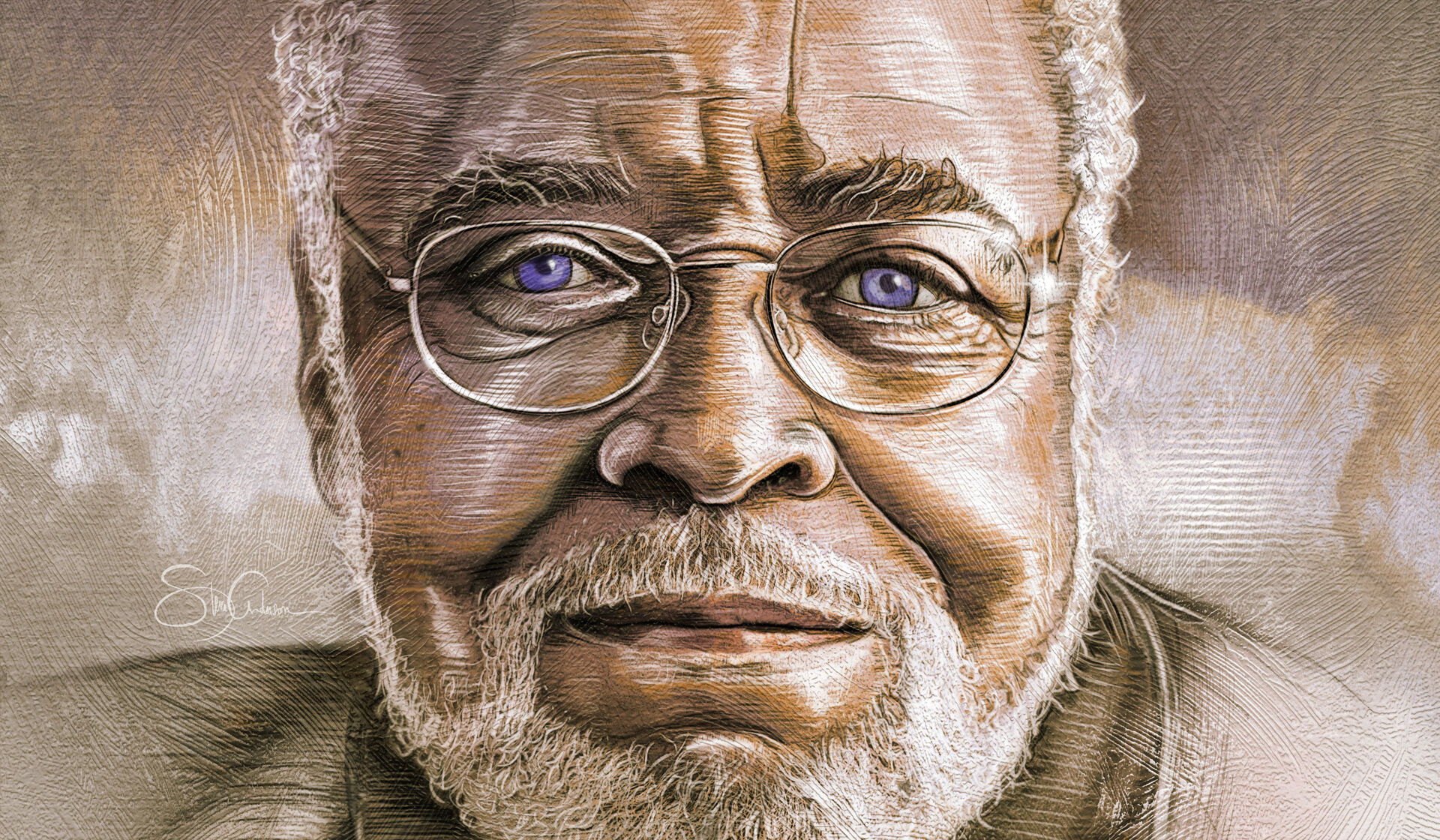Climate Haven* (*Terms and Conditions Apply)
•
Illustration by Gwen Keraval
Just as some will occasionally flock from Michigan to Florida, eager to replace shoveling snow with palm trees, millions of Americans could be poised to do just the opposite: flee the rising tides and temperatures, taking shelter from climate disasters in the very cities their parents or grandparents once vowed to leave behind.
The Great Lakes region has been identified as a climate haven for its access to 20 percent of the planet’s freshwater, distance from risk of sea level rise, and relatively low risk of extreme weather compared with other areas of the U.S. Ann Arbor has been bestowed the “climate haven” title, but it’s one researchers say can be misleading. Michigan may be in a better position to manage climate risks, but the threats are still present.
“While we face really significant climate threats, our threats have two advantages,” says Beth Gibbons, MUP’12, director of the Washtenaw County Resiliency Office in Michigan. “One is that our acute threats are still ahead of us. And our threats are largely water-based in an abundance of water. . . . But if we can figure out our water management, we’re really in a good position to be managing our greatest climate risk. Other places donʼt have that advantage and there are places that people will absolutely need to exit in the next 20 years.”
The Resiliency Office was established in 2024. There, Gibbons uses her climate adaptation experience to help Washtenaw County withstand and recover from challenges including climate change and economic shifts. She’s helping create a sustainable and inclusive future for all residents, including those who may arrive here as part of projected climate migration.
Potential Migration
The United Nations High Commissioner for Refugees predicts that by 2050, more than 200 million people will be forcibly displaced by extreme weather and environmental disasters, including storms, wildfires, rising sea levels, and extreme temperatures. It also includes those who elect to move away from disaster-prone areas.
“There are folks who have time, wealth, some degree of privilege, who are able to assess that they are living in a place of risk and increased discomfort, and they are taking this option to move away from that risk and discomfort,” Gibbons says, emphasizing that “discomfort” can be significant, such as the inability to be outside for weeks because of wildfire smoke.
Though the climate migration we’re seeing today is still largely anecdotal and doesn’t quite yet reveal major patterns, researchers are identifying the different patterns people may follow. Some move in-state or in-city, to a less vulnerable area. Other researchers look to where people have their remains returned to, as that can reveal kith/kin relationships and, thus, where someone might move to.
Derek Van Berkel, a SEAS professor, is the principal investigator for the Climate Adaptation and Resilience Strategies (CLARS) research project, which aims to fill gaps in understanding climate migration as a complex process that affects not only migrants but also the communities they join. His work helps inform the strategies cities will use to prepare for future climate needs, including the potential influx of new residents.
For him, the “climate haven” label is one that helps bridge conversations with interested policymakers.
“We are aware of the complexities of it. We want to make good decisions about it and not just say ‘This is a concept and we should just attract people’ and not make it haphazard,” he says.
Adapting for the Future
Climate adaptation isn’t just about preparing for projected climate migrants. It’s also for the community already here.
“There are really significant ways in which, intergenerationally, we are experiencing our communities and the place that we live differently, even while we stay in the same place,” Gibbons says.
Gibbons says climate adaptation work, when done well, begins with those who are most familiar with a place.
“What do you know about this place? What has changed? What’s different for you today than it was when you were a kid? If you’re a senior or an elder, what is it that you experienced that you’re not seeing in your children’s or your grandchildren’s life?” Gibbons will ask of longtime Washtenaw residents. “We can begin these conversations from a place of common understanding and qualitative experience and then bring good data to help people make informed decisions.”
For example, Ann Arbor has experienced a 46.8 percent increase in rainfall since 1951, which is one reason some areas experience flooding. Rather than updating dated infrastructure to our current climate needs, climate adaptation solutions anticipate future climate impacts.“
Adaptation work when it’s done well is not reduced to disaster mitigation. It’s about long-term planning. It’s about what has happened, what will happen, and what are the impacts,” Gibbons says.
Van Berkel says that some cities are still uncertain about the term and climate-driven shifts, but points out that many climate adaptation goals are inherently aligned with cities’ goals, whether the driver is making space for climate migrants, attracting new businesses, or reversing depopulation.
“There’s a lot of uncertainty of what climate migration in the future might look like. It coalesces this idea that we do need to think about this. If we don’t do this now, we’re going to be unprepared in 30, 40 years for this outcome,” Van Berkel says. “We have to start building a scholarship, but also building up the capacity within cities.”
Despite hesitations and etymological debates, the misleading nature of labels like “climate haven” don’t have to derail the work at its center.
“It has to be systemic and it has to be just and it has to use good data,” Gibbons says. “If it’s not doing those things, then I don’t want it. If it’s doing all those things, I don’t really care what you call it.”
Katherine Fiorillo is the senior editor of Michigan Alum.



